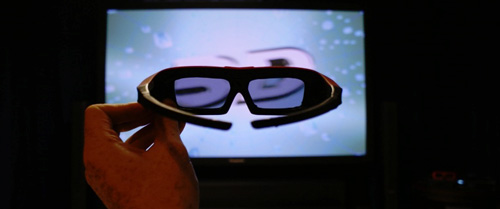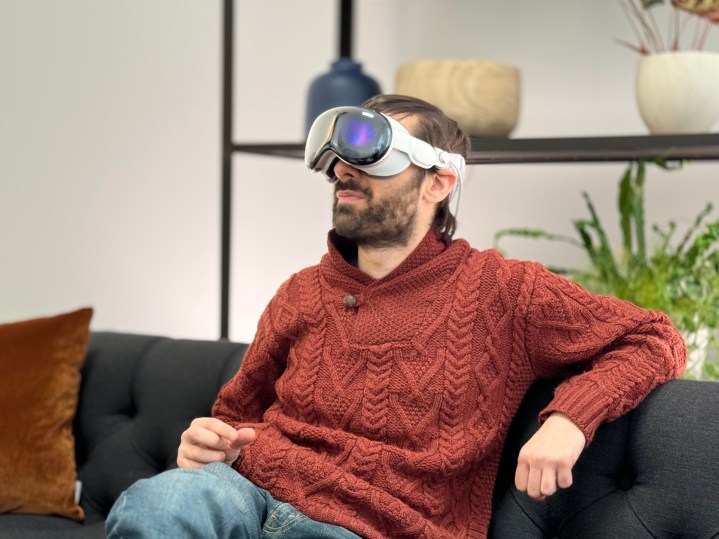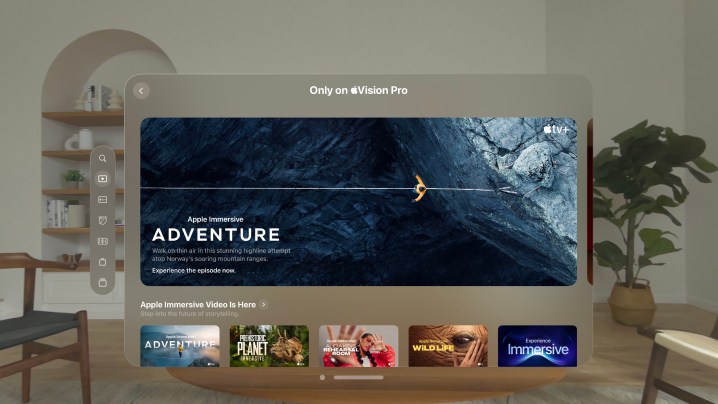
It’s not a stretch to say that 3D has reinvented itself more times than Taylor Swift. Unlike Swift, whose musical migrations only seem to add to her famously loyal fan base, 3D has suffered from an inability to make itself something that people actually want in their lives.
And though we’ve literally seen this movie before, 3D appears to be trying for relevance once again. Only this time, things might be different. Instead of trying to emulate a movie theater experience, 3D is getting personal, thanks to a little help from Apple and new glasses-free technology. This time, it might stick.
The rise and fall of 3D TV

Few will deny that 3D is fun. Having objects leap out of the screen at you can be thrilling. Or, if you share James Cameron’s 3D philosophy, peering into the depths of a scene can bring a deeper sense of immersion.
We’re no longer in the heyday of theatrical 3D (in 2013, more than 80 3D movies were released; by 2023 ,there were only 19), but it can still draw crowds. Cameron’s long-awaited sequel, Avatar: The Way of Water, grossed over $2 billion, and more than 60% came from 3D showings.
And yet, there seems to be a clear difference in people’s minds between 3D as a theatrical event and 3D at home. Nothing puts that in perspective better than sales of 3D-capable TVs, which began to soar in 2011, but were almost zero by 2017.
Opinions vary, but the combination of needing to don special 3D glasses, difficulty in accessing 3D content, and a mediocre visual experience likely were the biggest reasons for 3D TV’s spectacular flop. Most experts concur that we won’t be repeating this experiment anytime soon.
Head-mounted displays offer a new beginning

Fast-forward to 2024. Head-mounted displays have always been perfectly suited to show 3D content. With individual screens controlling what each eye sees, stereoscopic 3D effects can be presented with astonishing realism. And without the dimming and vignetting caused by polarized 3D glasses, it’s a brighter, crisper, and more colorful experience than anything you’ll see in theaters.
This was immediately apparent when I tried the Avegant Glyph, a personal video display that emerged from a successful crowdfunding campaign in 2016.

And Apple, for one, isn’t wasting this opportunity. As part of the preorder launch for the upcoming Vision Pro, the company is underscoring the headset’s 3D chops with custom content developed specifically for the device. Known as Apple Originals for Apple Vision Pro, the series will launch as part of the Apple TV+ subscription service on February 2 with four titles: Alicia Keys: Rehearsal Room, Adventure, Wild Life, and Prehistoric Planet Immersive.
All four episodes have been created using Apple Immersive Video, a new format that gives Vision Pro users a 180-degree, 3D field of view, along with spatial audio.
I have yet to try Apple Vision Pro, but Digital Trends’ Gaming Editor Giovanni Colantonio just did and quickly convinced me that Apple’s display technology will be a quantum leap over the Glyph’s.
After trying one of Apple’s Immersive Video experiences, he became convinced that the Vision Pro could truly be the future. “I feel like I’m actually in the moment,” Colantonio wrote. “I can see a world where I could virtually attend something like Taylor Swift’s Eras Tour and have a blast exploring the stage from a few well-placed cameras onstage.”
He might be onto something. I’ve mused along with Digital Trends AV Editor Phil Nickinson that U2’s Sphere experience in Las Vegas seems custom-made for the Apple Vision Pro. It certainly wouldn’t be the first time that the Irish legends have collaborated with Apple.
Apple TV app will be loaded with 3D movies, and Disney has also announced 3D support for the Vision Pro. The Disney+ app for visionOS will include titles like Avatar: The Way of Water, Avengers: Endgame, Star Wars: The Force Awakens, Elemental, and Encanto. As a bonus, you can watch 2D and 3D movies in one of four Disney environments: Disney+ Theater, the Scare Floor from Pixar’s Monsters Inc., Marvel’s Avengers Tower overlooking downtown Manhattan, and the cockpit of Luke Skywalker’s landspeeder while facing a binary sunset on the planet Tatooine.
Glasses-free 3D monitors

At CES 2024, a new twist on an old concept continued to emerge: glasses-free 3D. At the show, both Samsung and Acer gave us a look at monitors that provide immersive experiences for individuals. It’s not the first time that glasses-free 3D has been demonstrated, but it is the first time the effect has felt ready for prime time.
Digital Trends’ Computing writer Jacob Roach spent time with Samsung’s 2D/3D gaming monitor, which uses eye-tracking and head-tracking tech to analyze your position and gaze in real time, and he came away from the experience more impressed than he expected. “Once I sat down at the monitor and the illusion kicked in,” Roach wrote, “the monitor never broke it […] It worked excellently.”
Digital Trends Computing Editor Luke Larsen was similarly taken with Samsung’s monitor, but it was Acer’s version — the Predator SpatialLabs View 27 — that convinced him that glasses-free 3D gaming had finally transformed from a fun demo to a genuine product he wanted to buy. “The difference was worlds apart,” he said of the experience. “The sweet spot felt far bigger than on the Samsung monitor and I could even adjust the 3D settings to make the pop-out effect even stronger.”
Samsung only showed 3D gaming content at CES (and wouldn’t comment on the ability to show movies when we asked), but Acer showed both types of content. Larsen noted that 3D video content looked far less impressive than 3D games.
Between Apple’s head-mounted personal movie theater and a new generation of glasses-free 3D monitors, it looks like 3D experiences are poised for a big comeback. They won’t be shared experiences like we’ve had in the past, but that’s OK because they’ll be better 3D experiences — which is all any of us have ever asked for.
Editors' Recommendations
- You Asked: 3D VR, QDEL technology, and TV size vs. quality
- Apple Vision Pro brings TV, 3D movies to a massive, 100-foot-wide screen
- Apple’s AirPods Pro spatial audio turns your iPhone into a movie theater





